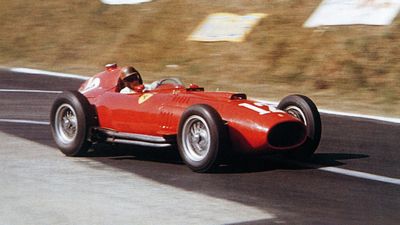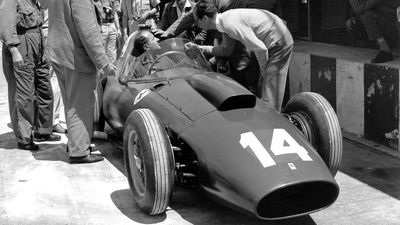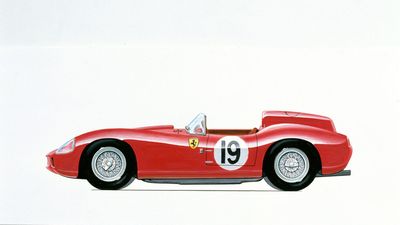









CALIFORNIA DREAMING
A LEGENDARY NAME FOR THE 250






CALIFORNIA DREAMING

1957 Masterpieces









Discover other stories
- 1957LAST MILLE MIGLIA: Ferrari History
- 1958ELEGANT CHAMPION: Ferrari History
CALIFORNIA DREAMING
Some cars have left their mark right from the start. True icons, by dint of their design, performance, and victories: the 250 GT California Spider is one of them. It was the brainchild of Luigi Chinetti, a US Ferrari importer and personal friend of Enzo Ferrari, and John von Neumann, his representative on the West Coast.

Von Neumann said that American customers wanted an open-top version of the sporty 250 GT for driving around in sunny California – the state after which the car was to be named. Chinetti convinced Enzo Ferrari that this was a good idea and instructed Sergio Scaglietti to bring it to life. The first was the 250 GT LWB (Long Wheel Base), based on the Tour de France berlinetta, which was then followed by the even more captivating 250 GT SWB (Short Wheel Base). The name Spider was used to avoided any confusion with the 250 GT Cabriolet designed by Pinin Farina, which was already in production and had a less sporty look. The California soon became the best seller among the jet set of Beverly Hills and Malibu Beach, but surprisingly few were in circulation. In fact only 106 examples were built, including nine totally in aluminium. The interior was rich and well finished. Some of the cars were adapted for racing use. Their best result was a fifth place in the 24 Hours of Le Mans in 1959, with Bob Grossman and Fernand Tavano for Scuderia NART of Luigi Chinetti, who was always personally involved in any racing activity or the launch of new models in the US.
The car had already performed well in the 12 Hours of Sebring in the same year, with a first place in its class and ninth overall for Richie Ginther and Howard Hively in NART colours. Several more wins and placings followed in 1959 and 1960 in the SCCA Championship as well as a first place in the Bahamas Memorial Trophy, mainly with Bob Grossman in the driver’s seat. At Sebring in 1960 Reed and Connell came fifth while Abate, Scarlatti, Serena were eighth, but first in the GT category. The California continued to compete until 1965. The California first appeared in late 1957 as a prototype and, from 1958 to 1960 the first LWB models were built; the subsequent SWB models were produced from 1960 to 1963. There was only 20 cm difference in length between them, but the SWB also allowed for a change in set-up, lowering the ride height by 3 cm. Certain body details also changed in terms of aesthetics, including the option of pop-up (not in Italy) or fixed headlights. A disc brake system was introduced in 1959 and the engine and chassis were also updated. The company only produced the car as a left-hand drive. The 250 GT California Spider was equipped with a 3,000 cc V12 engine with an output of 240 hp (LWB) and 280 hp (SWB) for a maximum speed of between 250 and 270 km/h. The most recent listing of a California SWB from 1961 valued it at over EUR 16 million.